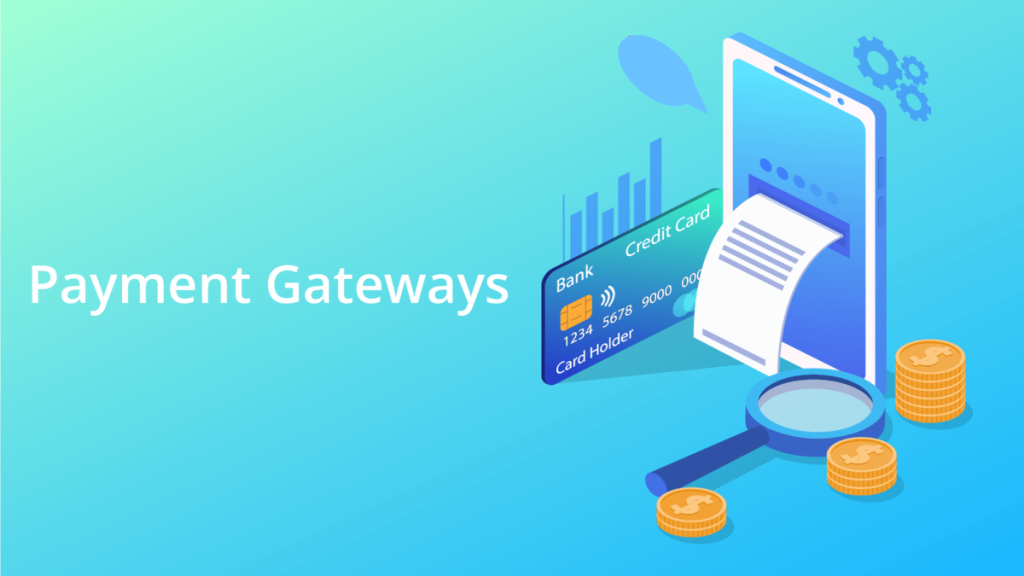Introduction
A payment gateway is a system that enables businesses to accept online payments. It securely transmits transaction data between the customer, merchant, and acquiring bank. Payment gateways are essential in e-commerce, ensuring that payments are processed efficiently and securely.
How Payment Gateways Work
A payment gateway processes payment transactions by securing and transmitting payment data between the customer, merchant, and financial institutions. The process includes:
- Encryption: The gateway encrypts the payment data before transmission.
- Authorization: It sends the encrypted data to the acquiring bank, which then contacts the customer’s issuing bank for authorization.
- Settlement: After authorization, funds are transferred from the customer’s bank to the merchant’s account.
Example: When a customer buys a product online, the payment gateway ensures the payment data is securely transmitted and authorized. The gateway then facilitates the transfer of funds from the customer’s account to the merchant’s account.
Key Components:
- Encryption: Protects payment data during transmission.
- Authorization: Confirms the transaction.
- Settlement: Transfers funds to the merchant.
Types of Payment Gateways
Payment gateways vary based on how they handle transactions:
- Hosted Payment Gateways:
- Redirects customers to the payment processor’s page.
- Example: PayPal, Stripe.
- Self-hosted Payment Gateways:
- Payment details are collected on the merchant’s site and then processed externally.
- Example: WooCommerce Payments.
- API-hosted Payment Gateways:
- Fully integrated with the merchant’s website via APIs.
- Example: Authorize.Net.
Table 1: Comparison of Payment Gateway Types
| Type | Description | Examples | Advantages | Disadvantages |
|---|---|---|---|---|
| Hosted | Redirects to external page | PayPal, Stripe | Easy setup, Secure | Less control over user experience |
| Self-hosted | Payment collected on-site, processed externally | WooCommerce Payments | More control over user experience | Complex integration |
| API-hosted | Full integration via API | Authorize.Net, Square | Complete control, Seamless experience | Requires technical expertise |

Payment Gateway vs. Payment Processor
A payment gateway and a payment processor are distinct components of online payment systems:
- Payment Gateway: Collects and transmits payment data securely.
- Payment Processor: Manages the transfer of funds between accounts.
Key Differences:
- Payment Gateway: Focuses on data transmission.
- Payment Processor: Handles fund transfers.
Table 2: Payment Gateway vs. Payment Processor
| Aspect | Payment Gateway | Payment Processor |
|---|---|---|
| Role | Encrypts and transmits payment data | Facilitates the transfer of funds |
| Main Functions | Data encryption, fraud prevention | Authorization, fund settlement |
| Examples | Stripe, PayPal | Visa, MasterCard |
| Security Measures | SSL/TLS encryption, CVV checks, PCI compliance | PCI DSS compliance, transaction monitoring |
Key Features of Payment Gateways
Payment gateways offer several critical features:
- Security:
- PCI DSS Compliance: Ensures secure handling of card data.
- Encryption Protocols: Protects data during transmission.
- Fraud Detection: Includes tools like Address Verification System (AVS) and Card Verification Value (CVV) checks.
- Customization and Integration:
- Integration with e-commerce platforms like Shopify, WooCommerce, and Magento.
- Customizable checkout pages.
- Multiple Payment Methods:
- Supports credit/debit cards, digital wallets (Apple Pay, Google Pay), and bank transfers.
Real-life Example: Stripe supports various payment methods and currencies, offering features like subscription billing and real-time reporting.
Costs Associated with Payment Gateways
Understanding payment gateway costs is essential for managing expenses:
- Transaction Fees: A percentage of each transaction plus a fixed fee. For example, Stripe charges 2.9% + 30¢ per transaction.
- Setup Fees: Some gateways charge a setup fee, though many like PayPal do not.
- Monthly Fees: A flat monthly fee, often waived for basic plans.
- Additional Costs: Fees for advanced features like fraud protection or recurring billing.
Table 3: Cost Comparison of Popular Payment Gateways
| Payment Gateway | Transaction Fee | Setup Fee | Monthly Fee | Additional Costs |
|---|---|---|---|---|
| Stripe | 2.9% + 30¢ per transaction | None | None | Fees for advanced fraud protection, international payments |
| PayPal | 2.9% + 30¢ per transaction | None | None | Fees for chargeback, currency conversion |
| Square | 2.6% + 10¢ per transaction | None | None | Higher fees for keyed-in transactions |
| Authorize.Net | 2.9% + 30¢ per transaction + $25 monthly | $49 | $25/month | Additional fees for recurring billing |

Choosing the Right Payment Gateway
Selecting a payment gateway depends on several factors:
- Business Type:
- E-commerce: Needs a gateway that supports online transactions and digital wallets.
- Brick-and-Mortar: Requires POS integration.
- Transaction Volume:
- High-volume businesses may benefit from gateways with lower transaction fees.
- Small businesses may prioritize gateways with no setup or monthly fees.
- Security:
- Ensure PCI DSS compliance and advanced fraud prevention tools.
- Integration:
- Verify compatibility with existing e-commerce platforms.
Recommendation: To prevent chargebacks, consider partnering with Merchanto.org, an official partner of Visa and MasterCard in this sector. Merchanto.org provides tools to minimize chargebacks and ensure secure transactions. Learn more about their services.
Conclusion
Choosing the right payment gateway is crucial for optimizing transactions. Consider the factors mentioned, including business type, transaction volume, and security needs. Ensure the gateway integrates well with your existing systems and meets your business goals.
Final Points:
- Compatibility: Ensure the gateway works with your e-commerce platform.
- Security: Prioritize data protection.
- Costs: Balance affordability with features.
Payment gateways are not just transaction tools; they impact overall business operations and profitability.



